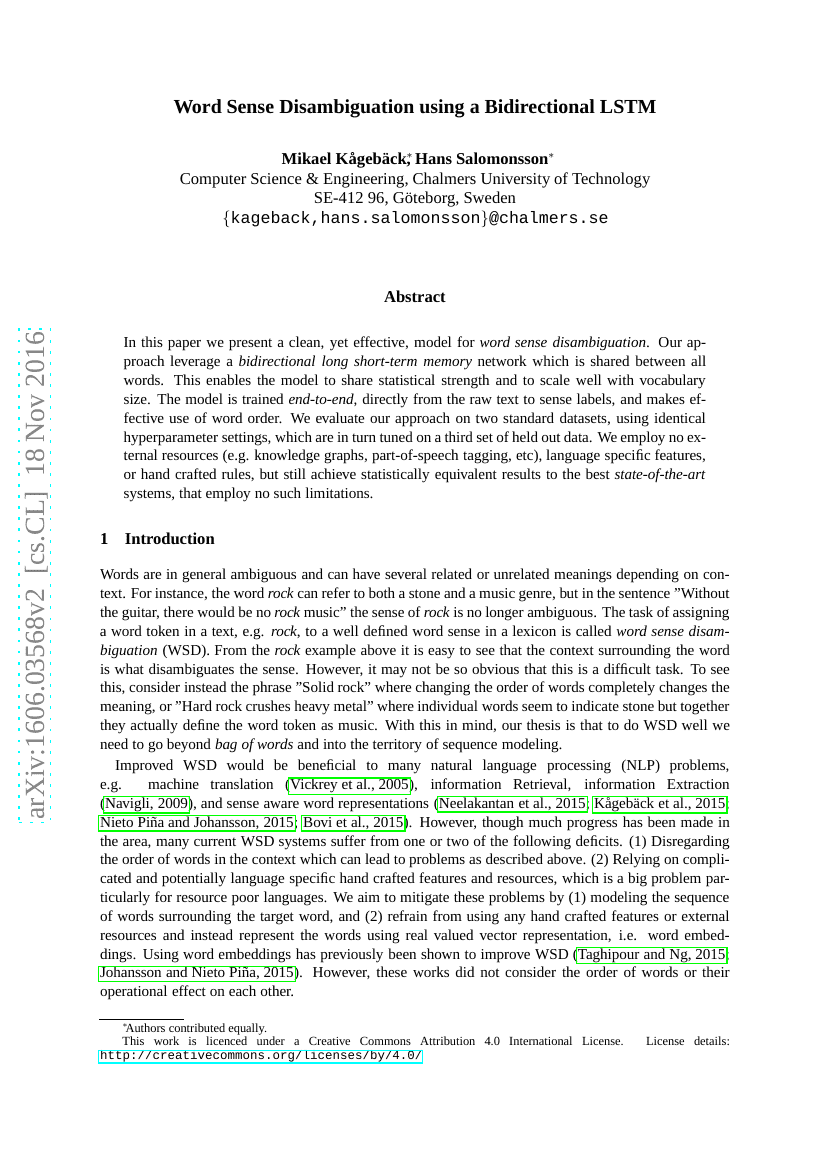Command Palette
Search for a command to run...
Mikael Kågebäck; Hans Salomonsson

Abstract
In this paper we present a clean, yet effective, model for word sense disambiguation. Our approach leverage a bidirectional long short-term memory network which is shared between all words. This enables the model to share statistical strength and to scale well with vocabulary size. The model is trained end-to-end, directly from the raw text to sense labels, and makes effective use of word order. We evaluate our approach on two standard datasets, using identical hyperparameter settings, which are in turn tuned on a third set of held out data. We employ no external resources (e.g. knowledge graphs, part-of-speech tagging, etc), language specific features, or hand crafted rules, but still achieve statistically equivalent results to the best state-of-the-art systems, that employ no such limitations.
Code Repositories
Benchmarks
| Benchmark | Methodology | Metrics |
|---|---|---|
| word-sense-disambiguation-on-senseval-2-1 | BiLSTM with GloVe | F1: 66.9 |
| word-sense-disambiguation-on-senseval-3 | BiLSTM with GloVe | F1: 73.4 |
Build AI with AI
From idea to launch — accelerate your AI development with free AI co-coding, out-of-the-box environment and best price of GPUs.